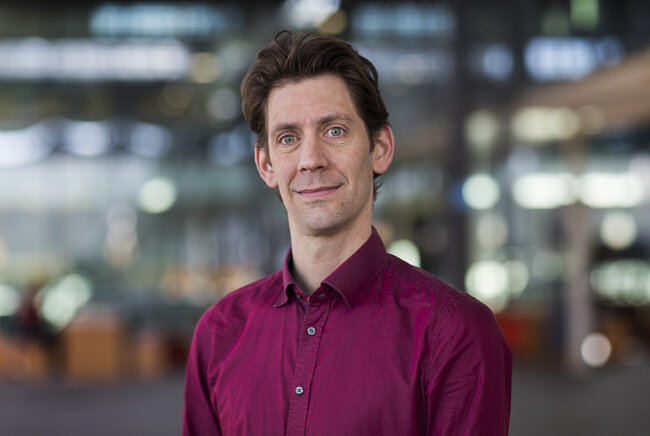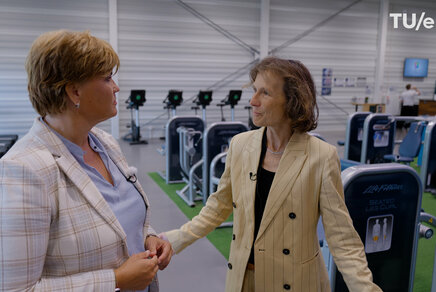Particle flow analysis for multi-material 3D food printing
Dolf Klomp defended his PhD thesis at the department of Mechanical Engineering on December 6th.

3D food printing is a new technique in the field of additive manufacturing. Powder bed fusion is one method of note, where food is made from layers of powders placed on top of each other. One way to achieve this is to use a small hopper to disperse the powder for each layer. The hopper is vibrated to force the powder to flow outwards in a controlled manner. However, when the vibration stops, powders can clump together and as a result, stop the powders from leaving the hopper later. For his PhD research, Dolf Klomp used computer simulations to study power flow from hoppers and compared results to experiments.
A new technique in the additive manufacturing field is 3D food printing. Additive manufacturing is a process in which an object is created (or 3D printed) layer-by-layer by stacking layers of material on top of each other. By changing the shape of each layer, a variety of shaped objects can be made. This process gives a lot of shape freedom and leads to less waste in comparison to subtractive processes. Recently, this process has also been applied in the food industry.
The need for simulation
One method of note within additive manufacturing is powder bed fusion, where the product is made from layers of powder. As most food objects consist of multiple materials it should be possible to create a multi-material food object using a 3D printing method. For powder bed fusion, this is challenging since a multi-material powder bed needs to be created. One way to create this is to selectively deposit tiny cubes of powder, thus a multi-material powder layer of a powder bed is built from tiny cubes of different powders.
The deposition of tiny powders in a controlled fashion is, however, not straightforward. One approach involves a miniaturized hopper with an open orifice and applying a small vibration to the hopper, which causes the powder to flow out of the hopper. When the vibration is stopped, powder flow stops because the powder clumps together near the exit orifice of the hopper.
Experimentally testing which powders work best and how much vibration needs to be applied is unfeasible due to the large amount of food powders available. So, for his PhD research, Dolf Klomp created a simulation to mimic the behavior of powders in vibrating hoppers.
Discrete element method details
The computational algorithm of choice for Klomp’s simulation model was the discrete element method. He extended the discrete element method to include the shape of the food particles by modeling them as arbitrarily shaped particles. In addition, he also considered an issue that could arise when arbitrarily shaped particles collide when using a hysteretic force model that is not present when modeling particles as spheres.
An important aspect of particle flow is that small particles have the tendency to clump together due to Van Der Waals forces. For spherical particles, analytical formulas are known, which make the calculation of thee forces much easier and faster.
However, this is not the case for arbitrarily shaped particles. In his work, Klomp described a method whereby the Van Der Waals forces are included in a computationally efficient manner.
To validate the model, the chance of powder flowing through a hopper or that it jams in the orifice of the hopper was calculated. The results were compared to experiments and a multi-material powder bed was created.
With this work, Klomp and his colleagues have shown that a multi-material powder bed can be created with free-flowing powder with the method of a miniaturized vibrating hopper. However, when the powder has a tendency to clump together, the modelling process is much more difficult. Furthermore, Klomp has shown that his model is capable of generating quantitative results for the flow of arbitrarily shaped particles through a hopper.
Title of PhD thesis: Particle flow analysis for multi-material 3D food printing. Supervisors: P.D. Anderson and M.A. Hulsen.
Media contact
Latest news


![[Translate to English:] [Translate to English:]](https://assets.w3.tue.nl/w/fileadmin/_processed_/9/a/csm_Sander%20Banner%20Image%20BvOF%202024_0910_AMW_bdd80d45ec.jpg)